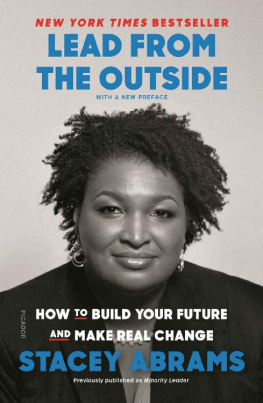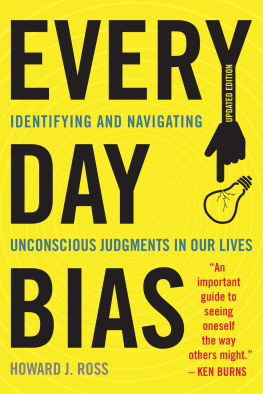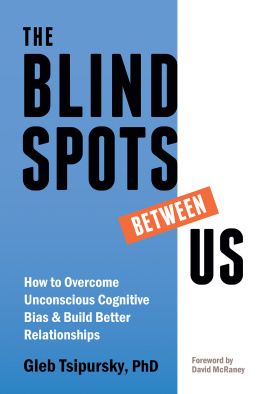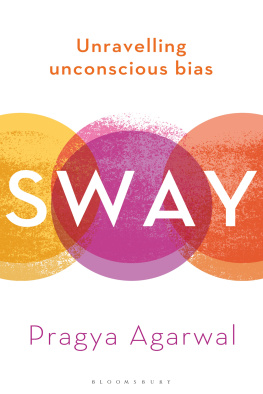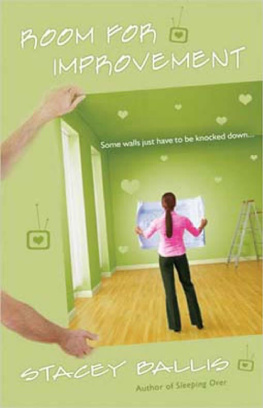Stacey A. Gordon - Unbias: Dismantling Unconscious Bias at Work
Here you can read online Stacey A. Gordon - Unbias: Dismantling Unconscious Bias at Work full text of the book (entire story) in english for free. Download pdf and epub, get meaning, cover and reviews about this ebook. year: 2021, genre: Business. Description of the work, (preface) as well as reviews are available. Best literature library LitArk.com created for fans of good reading and offers a wide selection of genres:
Romance novel
Science fiction
Adventure
Detective
Science
History
Home and family
Prose
Art
Politics
Computer
Non-fiction
Religion
Business
Children
Humor
Choose a favorite category and find really read worthwhile books. Enjoy immersion in the world of imagination, feel the emotions of the characters or learn something new for yourself, make an fascinating discovery.

- Book:Unbias: Dismantling Unconscious Bias at Work
- Author:
- Genre:
- Year:2021
- Rating:5 / 5
- Favourites:Add to favourites
- Your mark:
- 100
- 1
- 2
- 3
- 4
- 5
Unbias: Dismantling Unconscious Bias at Work: summary, description and annotation
We offer to read an annotation, description, summary or preface (depends on what the author of the book "Unbias: Dismantling Unconscious Bias at Work" wrote himself). If you haven't found the necessary information about the book — write in the comments, we will try to find it.
Unbias: Dismantling Unconscious Bias at Work — read online for free the complete book (whole text) full work
Below is the text of the book, divided by pages. System saving the place of the last page read, allows you to conveniently read the book "Unbias: Dismantling Unconscious Bias at Work" online for free, without having to search again every time where you left off. Put a bookmark, and you can go to the page where you finished reading at any time.
Font size:
Interval:
Bookmark:
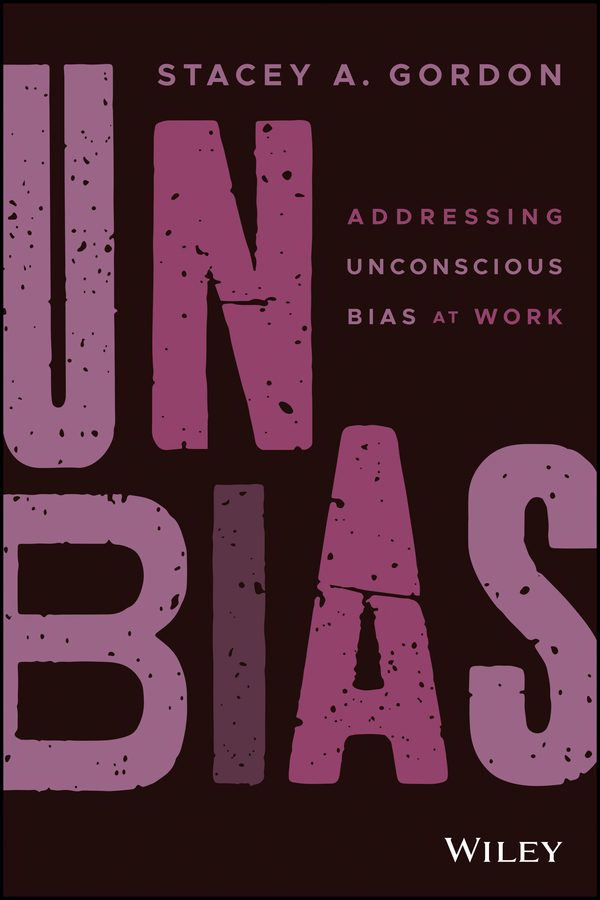
- Chapter 1
- Chapter 4
- Chapter 6
- Chapter 8
- Chapter 10
- Chapter 13
STACEY A. GORDON

Copyright 2021 by John Wiley & Sons, Inc. All rights reserved.
Published by John Wiley & Sons, Inc., Hoboken, New Jersey.
Published simultaneously in Canada.
No part of this publication may be reproduced, stored in a retrieval system, or transmitted in any form or by any means, electronic, mechanical, photocopying, recording, scanning, or otherwise, except as permitted under Section 107 or 108 of the 1976 United States Copyright Act, without either the prior written permission of the Publisher, or authorization through payment of the appropriate percopy fee to the Copyright Clearance Center, Inc., 222 Rosewood Drive, Danvers, MA 01923, (978) 7508400, fax (978) 6468600, or on the Web at www.copyright.com. Requests to the Publisher for permission should be addressed to the Permissions Department, John Wiley & Sons, Inc., 111 River Street, Hoboken, NJ 07030, (201) 7486011, fax (201) 7486008, or online at http://www.wiley.com/go/permissions.
Limit of Liability/Disclaimer of Warranty: While the publisher and author have used their best efforts in preparing this book, they make no representations or warranties with respect to the accuracy or completeness of the contents of this book and specifically disclaim any implied warranties of merchantability or fitness for a particular purpose. No warranty may be created or extended by sales representatives or written sales materials. The advice and strategies contained herein may not be suitable for your situation. You should consult with a professional where appropriate. Neither the publisher nor author shall be liable for any loss of profit or any other commercial damages, including but not limited to special, incidental, consequential, or other damages.
For general information on our other products and services or for technical support, please contact our Customer Care Department within the United States at (800) 7622974, outside the United States at (317) 5723993 or fax (317) 5724002.
Wiley publishes in a variety of print and electronic formats and by printondemand. Some material included with standard print versions of this book may not be included in ebooks or in printondemand. If this book refers to media such as a CD or DVD that is not included in the version you purchased, you may download this material at http://booksupport.wiley.com. For more information about Wiley products, visit www.wiley.com.
Library of Congress CataloginginPublication Data:
Names: Gordon, Stacey A., author.
Title: Unbias : addressing unconscious bias at work / Stacey Gordon.
Description: Hoboken, New Jersey : Wiley, [2021] | Includes bibliographical references and index.
Identifiers: LCCN 2021003282 (print) | LCCN 2021003283 (ebook) | ISBN 9781119779049 (hardback) | ISBN 9781119779063 (adobe pdf) | ISBN 9781119779070 (epub)
Subjects: LCSH: Discrimination. | Subconsciousness. | Diversity in the workplace.
Classification: LCC HM821 .G6735 2021 (print) | LCC HM821 (ebook) | DDC 331.13/3dc23
LC record available at https://lccn.loc.gov/2021003282
LC ebook record available at https://lccn.loc.gov/2021003283
Cover Design: Wiley
Cover Image: Shanina/Getty Images
This book is dedicated to all the people who have worked tirelessly to improve workplaces for all without the recognition of a formal title, without the benefit of resources, and with nothing but the knowledge and desire that things need to change.
Diversity, inclusion, bias these can be sensitive topics that are difficult to talk about, especially at work. We are at a time when we don't know how to talk about sensitive topics. We've been taught to avoid them and now they are staring us in the face. I am writing this book in an election year when opinions about everything, including politics, have become extremely divided. Individuals are at opposing ends of the spectrum with no tools for how to listen to the point of view of another without name calling and labeling. We have been taught for so long not to discuss sex, politics, or religion, when what we should have been taught was how to constructively discuss sex, politics, and religion. And what is noticeably missing from what I call the three taboo terms is race. It is so ingrained in us not to discuss race that we don't even talk about the fact that we don't talk about race. It is no surprise then, that it is difficult for us to have conversations around race, gender, privilege, and other dimensions of diversity in the workplace.
It is also not surprising there is a reluctance and a lack of understanding around why we're having these conversations at work at all. I hear that work isn't the place for these conversations. We just come to work and do our jobs and that is what we should focus on.
These are excuses, and I will tackle those and many more throughout the book, but what I want to address is the chasm that is growing between individuals of different races. Why does it always have to be about race? Your perception may be that it is always about race, but it isn't. Unconscious bias at work, in your workplace, is about race, gender, sexual orientation, age, ability, religion, veteran status, socioeconomic background, education, culture, and geography.
We do keep coming back to race because we haven't addressed the issues of race and racism in the United States. The only way to get past race is to go through it. Winston Churchill said, If you're going through hell, keep going, and we haven't kept going. We keep stopping because the road is tough, the conversations are uncomfortable, and the realization that what we've been doing for many years may have been wrong is difficult to face.
Fortunately for you, I have no qualms about diving in headfirst and tackling the tough topics we need to address, and I'll do it by helping you to address unconscious bias at work.
Awareness
The Blueprint
The number one question I am always asked when it comes to diversity and inclusion initiatives is How will we know we're doing the right thing? I have been asked several versions of this question in podcasts, at conferences, on panels, by CEOs, during a fireside chat, and in educational workshops by employees.
No one wants to get this wrong. Or at least, from what I have seen, no one wants to appear as if they don't care. However, the difference between whether you actually care or whether you care more about the appearance of seeming to care makes all the difference to your success.
The first question I ask company leaders when I am tasked with advising them on their next steps is What is your strategy? Unfortunately, it is no longer surprising that they answer all too frequently, We don't know.
My goal is to answer both How do we do this right? and What is your strategy? because the answers to both of these questions are related.
The concept of diversity is difficult because there isn't a onesizefitsall solution. What works for one company will not work for another. Companies like Ben & Jerry's are being applauded for their statements, their social media presence, and their loyal customer following, and business leaders want to be
Next pageFont size:
Interval:
Bookmark:
Similar books «Unbias: Dismantling Unconscious Bias at Work»
Look at similar books to Unbias: Dismantling Unconscious Bias at Work. We have selected literature similar in name and meaning in the hope of providing readers with more options to find new, interesting, not yet read works.
Discussion, reviews of the book Unbias: Dismantling Unconscious Bias at Work and just readers' own opinions. Leave your comments, write what you think about the work, its meaning or the main characters. Specify what exactly you liked and what you didn't like, and why you think so.



